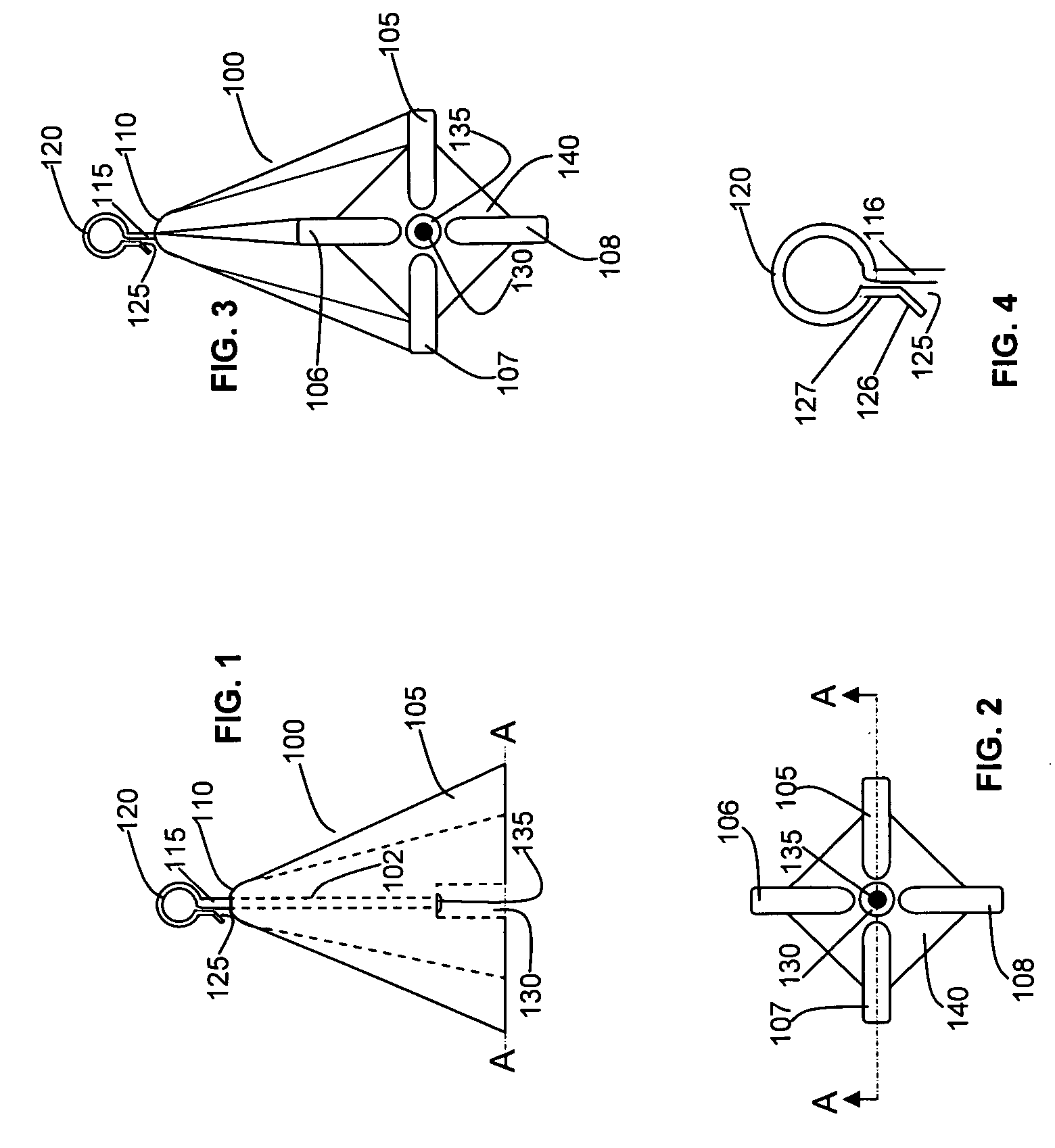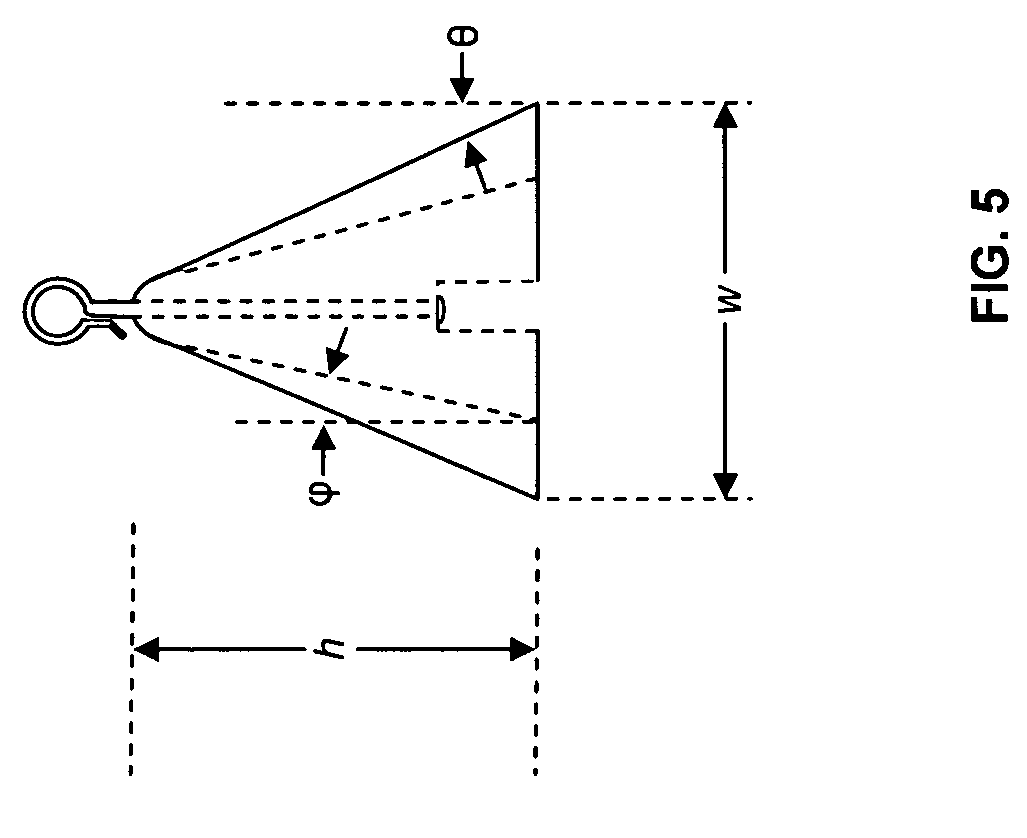Slip-on hydrodynamic symmetrical fishing sinker
a technology of hydrodynamic symmetry and sinker, which is applied in the field of fishing, can solve the problems of infested fishing waters considered “off limits”, become snagged or hung up, undesired twisting of lines, etc., and achieve the desired weight, hydrodynamic characteristics, and prevent twisting of lines.
- Summary
- Abstract
- Description
- Claims
- Application Information
AI Technical Summary
Benefits of technology
Problems solved by technology
Method used
Image
Examples
Embodiment Construction
[0013] As shown in FIG. 1, an exemplary sinker 100 according to principles of the invention is comprised of an integrally molded weighted body having a forwardly tapered pyramid-shaped body with four fins 105-108 projecting laterally therefrom. Fins 105-108 extend in a fore and aft direction for almost the entire length of the body of the sinker 100. The fins may taper in thickness and lateral extension from the trailing edge base of the sinker to the blunt leading edge of the sinker.
[0014] The sinker 100 has a bulbous (i.e., blunt), semi-spherical front leading edge 110 (as shown in FIGS. 1 and 3) and a relatively flat generally rectangular finned trailing edge 140 (as shown in FIG. 2). A central axis passes through the center of the leading edge 110 and the center of trailing edge 140. A polyhedron body has a rectangular base 140 and triangular sides with the semi-spherical front leading edge as a common vertex.
[0015] A central channel 102 is provided for receiving an eyelet pin...
PUM
 Login to View More
Login to View More Abstract
Description
Claims
Application Information
 Login to View More
Login to View More - R&D
- Intellectual Property
- Life Sciences
- Materials
- Tech Scout
- Unparalleled Data Quality
- Higher Quality Content
- 60% Fewer Hallucinations
Browse by: Latest US Patents, China's latest patents, Technical Efficacy Thesaurus, Application Domain, Technology Topic, Popular Technical Reports.
© 2025 PatSnap. All rights reserved.Legal|Privacy policy|Modern Slavery Act Transparency Statement|Sitemap|About US| Contact US: help@patsnap.com



